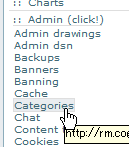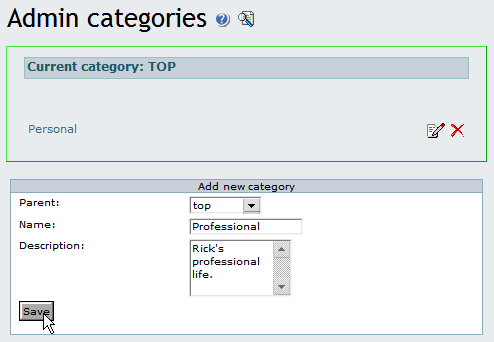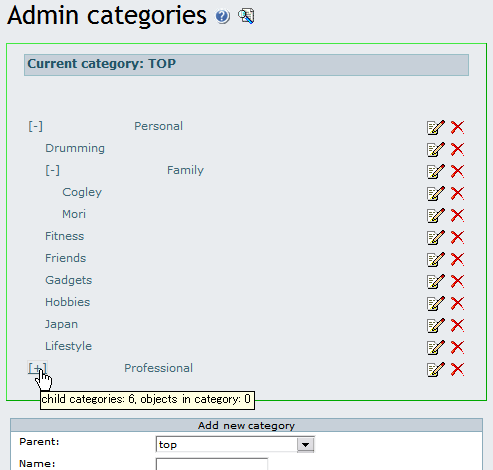History: Category Admin
Preview of version: 7
Categories Admin
By administering categories in tikiwiki you can manage large sites with a lot of content being created on the fly, and make navigation and indexing much easier.
Categories can also be used together with permissions to hide objects/pages from specific groups of users, creating "private" areas that may even look different from the rest of the site.
Tikiwiki is feature rich, and many features overlap, especially when it comes to how many ways you can orgainze content. In designing a tikiwiki site you have to decide early what kind of navigation is most appropriate and then use menus, hyperlinks, topics, structures and themes accordingly.
Are you building a knowledge base with a more or less permanent table of contents? - use categories.
Are you collaboratively writing documents that need to be viewed in order, or published as a hard copy (PDF) - use structures.
Are you hosting discussions, blogs or forums where topics tend to come and go a lot? - use regular hypertext and wiki links, rather than getting bogged down in creating heirarchies that nobody will care about tommorrow.
Are you creating objects/pages that a time sensitive status - use trackers.
Are you using tikiwiki with multiple groups who need access to separate or private areas? - use structures or groups
Creating categories and sub-categories
Adding content to categories
Assigning permissions to categories.
To assign permissions to a category, go to tiki-admin_categories.php and click the appropriate key icon, which will send you to tiki-categpermissions.php. tiki-categpermissions looks and works very much like tiki-pagepermissions.php.
The current category permission system follows the following rules.
1. Categories are considered objects, just like wiki pages and forums, etc.
2. Permissions assigned to children objects take precedence over permissions assigned to parent objects.
3. If no permissions are assigned to an object, the permissions assigned to the closest ancestor object takes precedence.
4. If no permissions are assigned to an object and any of its ancestor objects, the global permission is considered.
5. In the case where an object belongs to multiple categories, the better-safe-than-sorry approach is taken. If a user lacks a given permission regarding a particular category, that category takes precedence when considering if user has that permission.
(from CategoryPermissions)
Applying themes to categories.


